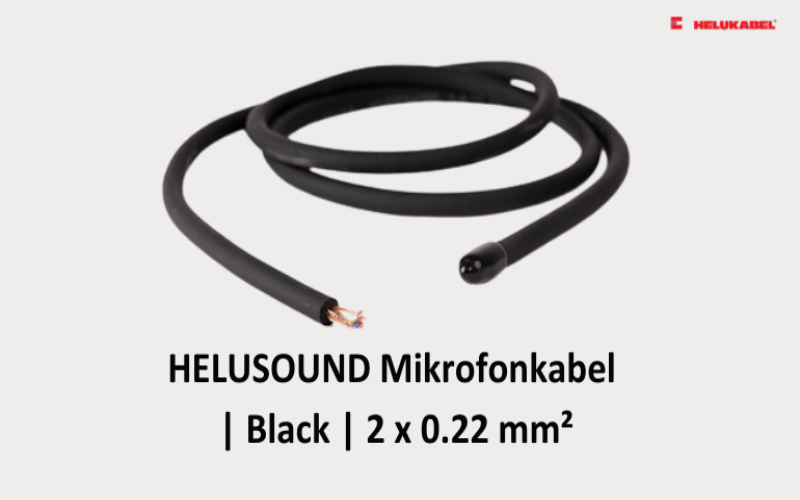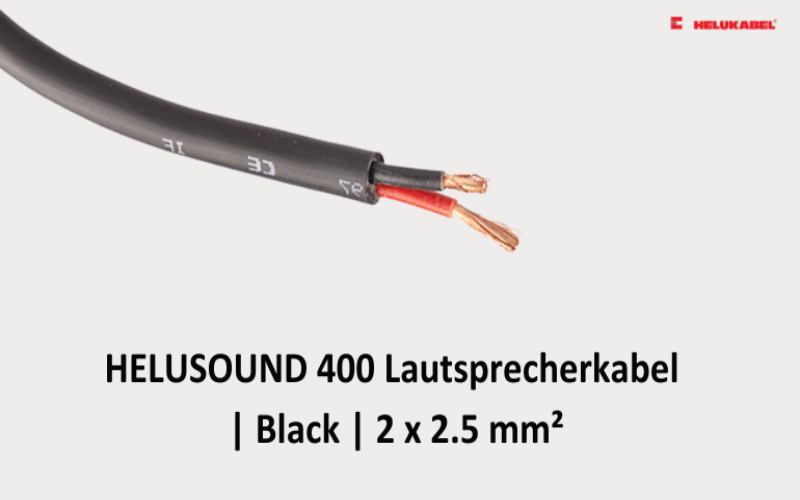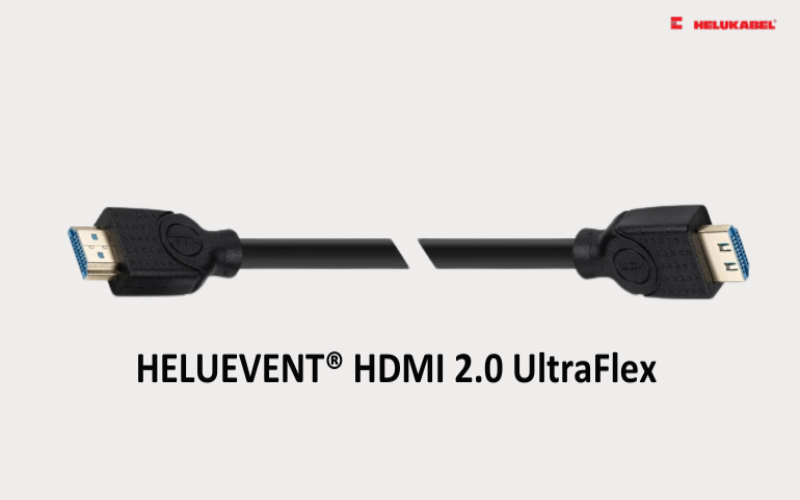What are audio cables? Typical types of audio cables
Audio cables not only determine sound quality but also impact the user experience. Let's explore the basics of audio cables in the following article.
1. Overview of audio cables

1.1 What are audio cables
Audio cables are a type of cable used to transmit audio signals, such as voice or music. These cables can be connected to various audio devices, including stereo systems, microphones, and speakers. Audio cables are designed to transmit signals accurately while minimizing interference, thereby preventing distortion of sound quality.
1.2 Critical functions of audio cables
3 main functions of audio cables include:
- Signal transmission: Audio cables are used to connect devices such as stereo receivers, TVs, musical instruments, and many other devices, ensuring that signals are transmitted effectively from one device to another.
- Noise reduction: Audio cables help reduce noise , which can distort the signal and introduce unwanted sound. Balanced cables are particularly effective at resisting noise, thereby preserving sound quality.
- Sound quality assurance: Audio cables can influence sound quality by transmitting signals as accurately and vividly as possible. The materials used in the cables, such as silver for brighter sound or copper for balanced and warm sound, can also affect the audio experience. High-quality audio cables can enhance depth and complexity, deliver tighter and clearer bass, refine sound shaping, and improve transient response and accuracy across the frequency range.
2. Basic components of audio cables
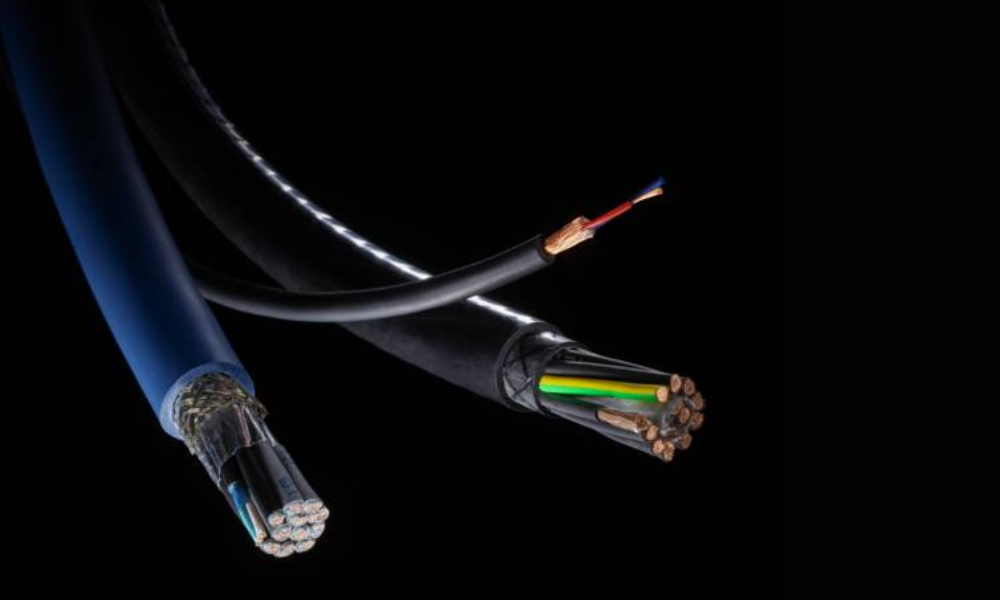
The structure of audio cables includes the following components:
2.1 Conductor
The conductor is responsible for transmitting signals and energy. A conductor of the appropriate size and material will preserve the integrity of the electrical transmission through the cable from the original source. If the conductor is too small or made of low-quality conductive metal, the audio signal will encounter higher resistance, leading to changes in sound quality. Copper is the most commonly used conductive metal in audio cables, known for providing a balanced and "warmer" sound.
2.2 Insulation
The insulation determines the cable's ability to withstand current. It is essential because, without proper insulation, there is a risk of electrical equipment malfunction or even explosion.
2.3 Shield
The quality of sound partly depends on the elimination or reduction of noise that the conductor can pick up between devices. For balanced cables, shielding is less critical because they typically transmit audio signals at line level, without additional amplification. Balanced cables are designed to carry two identical signals that are out of phase; one signal is inverted at the end, which cancels out any noise. In contrast, unbalanced cables are more prone to picking up unwanted noise over long distances because the internal ground wire can act as an antenna, making it more susceptible to interference.
2.4 Outer sheath
The outer sheath, usually made of PVC, protects the internal components of the audio cables.
2.5 Connectors
Connectors are used to connect the cable to various electrical devices, such as computers, musical instruments, and speakers.
3. Classification of audio cables
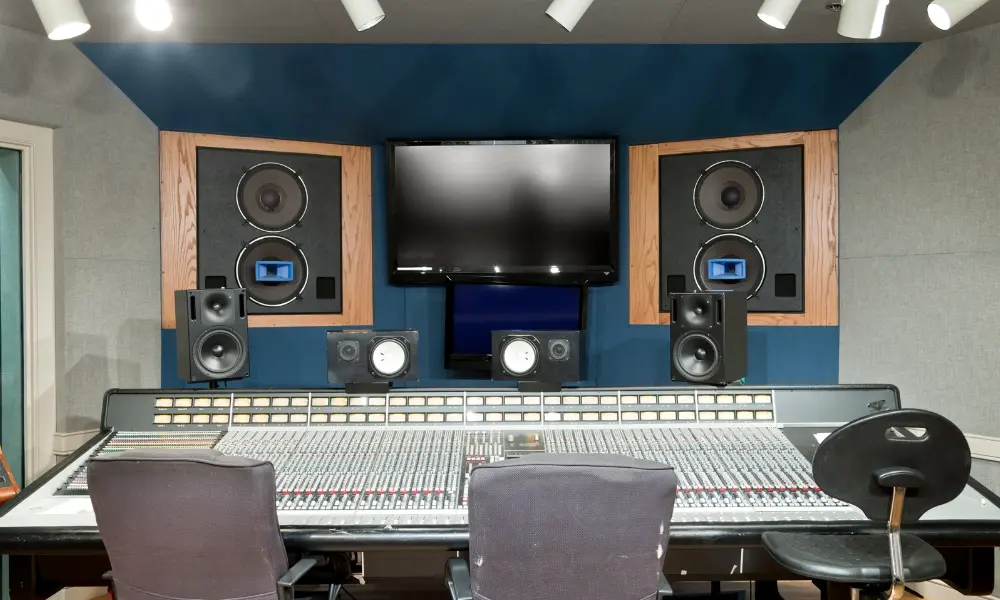
3.1 Analog audio cables
Analog audio signals play a crucial role in the processing and transmission of sound. Signals from microphones and speakers are analog, and some audio signals between devices are also analog. While wireless signals are becoming more popular, wired connections remain the preferred choice for applications requiring high reliability, such as in professional recording studios. Analog audio cables are used to connect line-level signals to devices like mixers, equalizers, and power amplifiers. They are also useful for connecting microphones, DVD players, and various other devices to stereo receivers, and can even enhance digital signals. However, these cables are not ideal for long-distance connections, as they can cause signal instability. Over long distances, sound quality may degrade, especially if a ground loop is present. Ground loops occur when devices are not properly connected, leading to interference and negatively impacting sound quality.
Some common types of analog audio cables include TRS, XLR, RCA…
3.2 Digital audio cables
This type of cable supports the transmission of digital audio through light pulses, making it highly efficient and easy to use. First, the electrical signal is converted into an optical signal. Unlike copper cables, this type of audio cable is less affected by external noise sources, such as radio frequency interference, because light is not subject to resistance. Optical cables are equipped with thick shielding, which resists ambient noise and ensures there is no signal loss, even when transmitted over long distances. Additionally, optical cables are also used to connect data centers, providing stability and high transmission speeds.
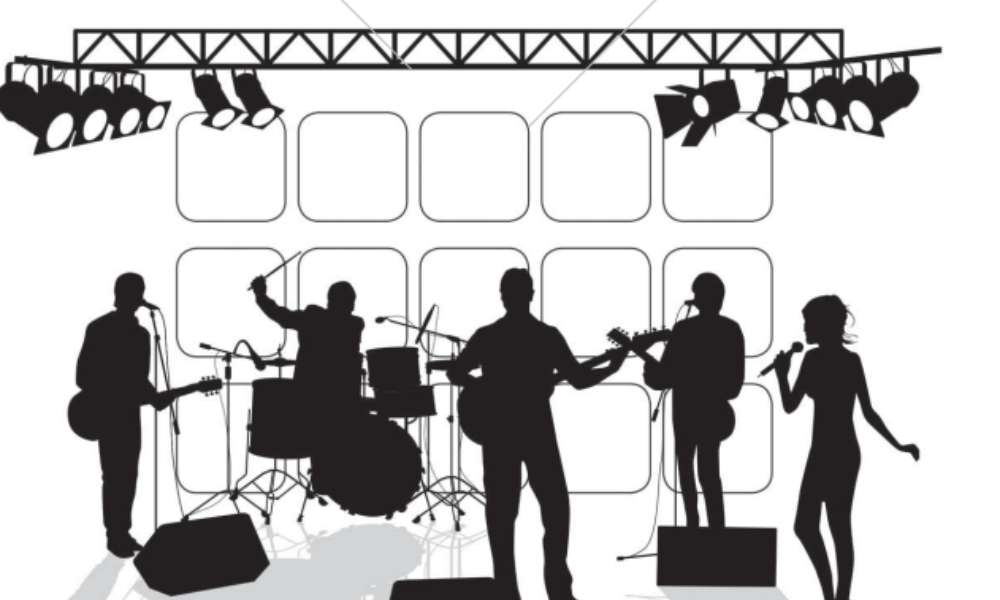
3.3 Speaker cables
Speaker cables are used to transmit signals from a stereo receiver to a speaker system. Although they are not balanced audio cables, speaker cables play a crucial role in transmitting audio signals. Sound quality can be compromised by excessive cable length, low-quality conductor materials, or an improper cable gauge. In live performances and events, speaker cables need to have high tensile strength and abrasion resistance, ensuring they can be used repeatedly without a loss in performance.
3.4 Coaxial digital cables
Digital coaxial cables are audio cables that use RCA connectors to transmit digital audio signals. They are commonly used to connect DVD players to audio/video (A/V) receivers or digital recording devices. These cables are designed to handle a wider frequency bandwidth for digital audio streams, ensuring a more stable and reliable connection.
4. HELUKABEL’ audio cables for event and media technology
HELUKABEL offers a wide range of audio cables that are widely used in sound systems, connection systems in amusement parks, media events, and more. HELUKABEL provides high-quality solutions, ensuring perfect sound output, lighting effects, and superior image quality.
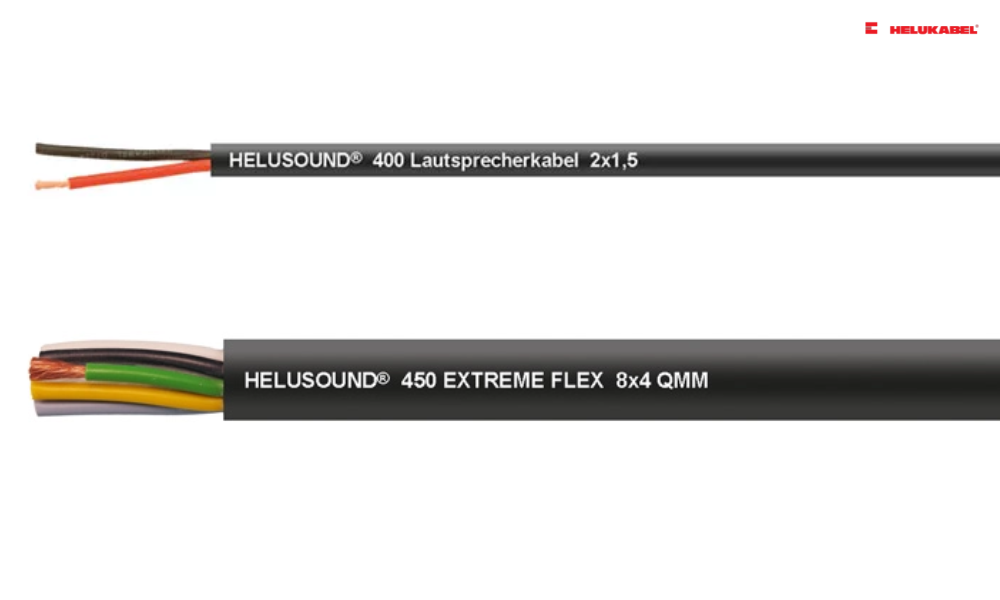
4.1 HELUSOUND® 400 PVC audio cables
The HELUSOUND® 400 PVC audio cables are constructed with 0.15 stranded wires and a soft PVC outer sheath, providing an exceptionally high level of flexibility. This audio cable is ideal for mobile applications on stage, in studios, or within the conference industry.
4.2 HELUSOUND® 450 EXTREME FLEX PVC audio cables
HELUSOUND® 450 EXTREME FLEX PVC audio cables are exceptionally flexible and durable, featuring an outer sheath made of soft, flame-retardant PVC material. The two cores of this cable are optimally twisted, class 6, ensuring maximum flexibility while maintaining stability. As a result, these cables:
- Are suitable for both indoor and outdoor applications.
- Are ideal for festivals and stage technology, where flexibility and adaptability are crucial.
- Are optimized for permanent installation in studios and broadcast environments.
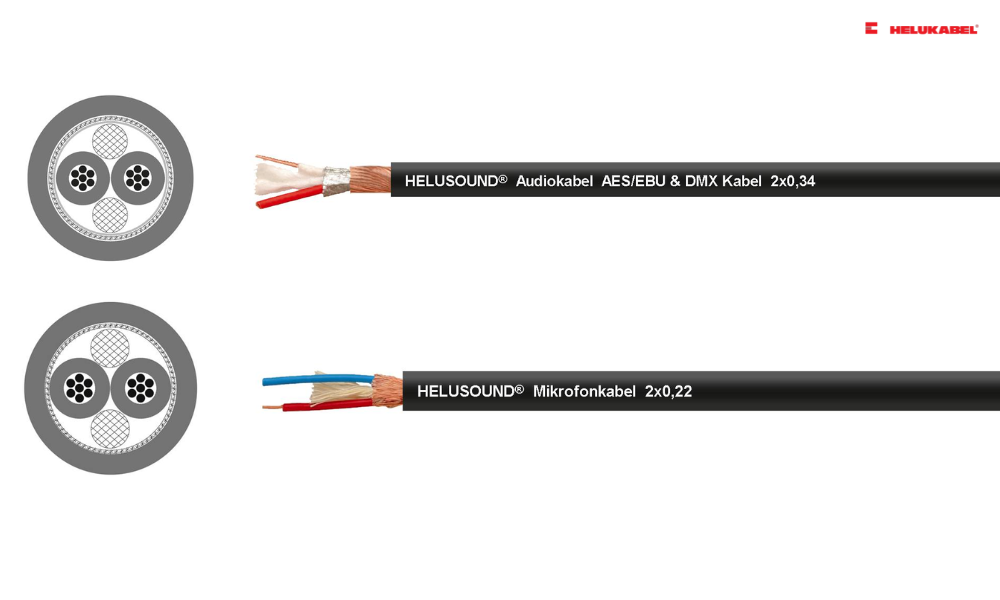
4.3 HELUSOUND® AES/EBU DMX SC BLACK audio cables
HELUSOUND® AES/EBU DMX audio cables feature a black outer jacket made of PVC material. They are available in two versions: 2 cores (red and white) and 4 cores (white, blue, brown, yellow). These cables are protected from external interference by a copper twisted shield. They are suitable for fixed installation in lighting systems or for connecting digital audio amplifiers. The cable can be used both indoors and outdoors. The maximum signal transmission distance for DMX control is approximately 1000 meters.
4.4 HELUSOUND® MICROPHONE CABLE SC SLIM black audio cables
The HELUSOUND microphone cable series is a 2-core audio cable available in two versions: 0.22 mm² and 0.15 mm². The 0.22 mm² version features cores in red and blue, with the two cores twisted together and separated textile filler. The 0.15 mm² version has cores in red and white, twisted in pairs. This audio cable series is designed for use in professional stages and studios.
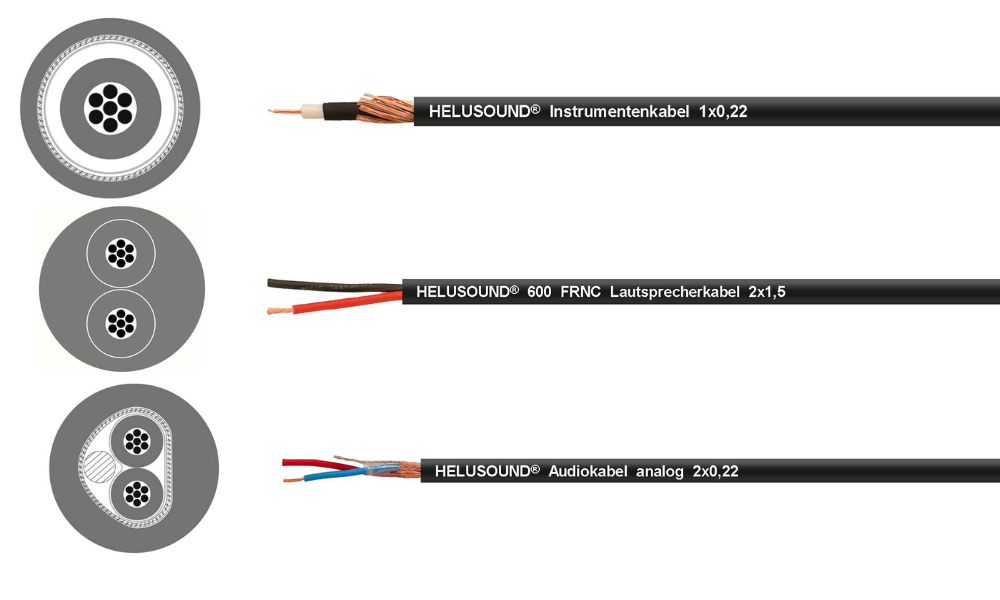
4.5 Other types of audio cables from HELUKABEL
In addition to the aforementioned audio cable series, the HELUSOUND® product portfolio also includes various other cables designed to meet diverse user needs:
- HELUSOUND® instrument : This is a single-core, double-shielded audio cable available in two versions with cross-sections of 0.22 mm² and 0.38 mm². The 0.38 mm² version features an enhanced cross-section, equipped with a semiconductor layer and spiral screen, making it ideal for use in stages and studios with the toughest requirements.
- HELUSOUND® 600 FRNC halogen-free cable : The sheath of this cable is marked with FRNC, indicating that it is flame retardant and non-corrosive. This cable is designed to prevent flames from spreading during a fire, ensuring the integrity of the electrical system.
- AES/EBU digital audio cable : This digital audio cable consists of two cores (red, blue) and a ground conductor, commonly used to connect audio amplifiers, digital audio mixers, DAT recorders, and more. Besides the standard PVC outer sheath version, this cable is also available with a PUR outer sheath.
In addition, HELUKABEL offers customized audio cable solutions tailored to meet the specific requirements and applications of each customer.
5. Frequently asked questions about audio cables
5.1 What is the difference between unbalanced and balanced audio cables?
Balanced audio cables (such as XLR cables) have two cores: a positive signal, a negative signal, and a ground wire. These wires transmit the signal through two wires with opposite polarity, helping to cancel out noise and interference picked up during transmission. Therefore, balanced cables are ideal for long-distance signal transmission.
Unbalanced audio cables (such as RCA or AUX cables) only have two cores: a signal wire and a ground wire. Due to their simple structure, these cables are more prone to interference and are not suitable for transmitting signals over long distances.
5.2 What is the AES/EBU standard for audio cables?
AES/EBU is an international standard for digital audio signal cables developed by the Audio Engineering Society (AES) and the European Broadcasting Union (EBU). This standard is also known as AES3. AES/EBU cables are used to transmit digital audio signals from CD and DVD players to amplifiers and TVs. Some technical specifications of AES/EBU cables include:
- Bandwidth: 4.096 MHz to 24.5 MHz
- Impedance: 110 ohms ± 20%
5.3 What is the difference between digital and analog audio cables?
Analog audio cables transmit continuous sound waves in the form of electrical signals. While analog signals can provide warm and detailed sound, they are prone to quality degradation over long distances and interference from nearby electrical devices.
Digital audio cables (such as optical and HDMI) transmit audio in the form of binary data (1s and 0s), which is then decoded by the receiving device. Digital signals are less susceptible to interference or environmental noise, resulting in clearer sound quality, especially when using longer cables. For example, optical cables transmit signals using light, eliminating the risk of electrical interference.
5.4 Can video cables be used as audio cables?
Some video cables, like HDMI, can transmit both audio and video signals, making them a versatile option for many applications. HDMI is commonly used in setups that require the transmission of both high-definition video and multi-channel audio. However, specialized audio cables like XLR or RCA may provide better sound quality in professional audio systems, as they are specifically designed to transmit audio without the interference or complexity associated with combining video and audio signals.
6. HELUKABEL's audio cable price list (Updated)
HELUKABEL offers a wide range of audio cable products to meet the diverse needs of customers. Each type of audio cable comes with a different price, depending on factors such as the number of cores, cross-sectional area, and jacket material. For advice on choosing the right audio cable and receiving the most accurate price quote, please contact HELUKABEL Vietnam's team of engineers directly.
Below is the reference price list for some HELUKABEL's audio cables:
| Audio cable types | Unit | Reference price (VNĐ/m) |
| HELUKABEL HELUSOUND Mikrofonkabel | Black | 2 x 0.22 mm², 10 meters | Meter | 71.000 |
| HELUKABEL HELUSOUND Mikrofonkabel | Black | 2 x 0.22 mm², 50 meters | Meter | 67.450 |
| HELUKABEL HELUSOUND Mikrofonkabel | Black | 2 x 0.22 mm², 100 meters | Meter | 63.900 |
| HELUKABEL HELUSOUND 400 Lautsprecherkabel | Black | 2 x 2.5 mm², 10 meters | Meter | 98.000 |
| HELUKABEL HELUSOUND 400 Lautsprecherkabel | Black | 2 x 2.5 mm², 50 meters | Meter | 93.100 |
| HELUKABEL HELUSOUND 400 Lautsprecherkabel | Black | 2 x 2.5 mm², 100 meters | Meter | 88.200 |
Note: The electrical cable prices provided above are for reference only and may vary depending on the specific time. For the most accurate and up-to-date pricing information, please contact HELUKABEL Vietnam’s sales team.
If you still have any concerns or questions, don't hesitate to reach out to HELUKABEL Vietnam's engineering team promptly for detailed assistance.
HELUKABEL® Vietnam
905, Nguyen Kiem Street, Ward 3, Go Vap District, Ho Chi Minh City 700000, Vietnam
Tel. +84 28 77755578 | info@helukabel.com.vn | www.helukabel.com.vn

